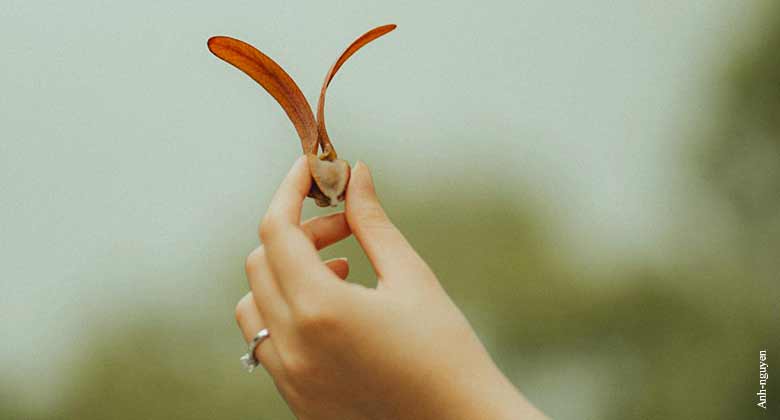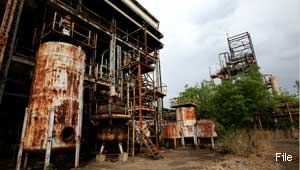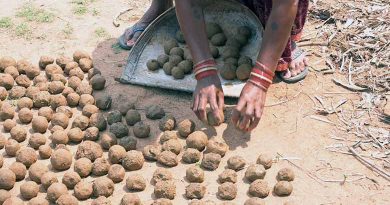Tribal seed ball initiative revitalizes Chhattisgarh forests
Raipur | Correspondent: In a significant push for environmental sustainability, self multiplying ecosystem tribal communities, including Primitive Vulnerable Tribal Groups (PVTGs), are crafting seed balls across various districts.
In the middle of summer, the tribal community gathers and collects seeds. These seeds are mixed up with coco peat, humus, cow dung, sand, clay, and other organic materials, providing essential nutrients to it. The mixture is then given a ball-type shape, this is also termed as seed bombs. These are then dried up in the sun to protect it from seed predators (ants, mice, and birds) as well as from being ruptured. The seed bombs are scattered in forests and barren lands, relying on rain. Once sufficient rain permeates the clay, seed inside begins to germinate.
With an objective of rejuvenating forests which are majorly affected by the illegal logging, two thousand women from remote village organization of Bhanupratapur a town in Kanker district are involved in crafting one lakh seed balls, with 10 thousand already prepared. This initiative, driven by community participation, aims to restore forest cover and enhance ecological balance.
Local leaders, in collaboration with the Forest Department and Bihan, are leading efforts in Barbaspur and Birkondal. They focus on educating women about seed ball production and providing necessary resources to ensure sustainable forest regeneration.
Additionally, under the Vriksha Kisan Mitra Yojana, plans are in place to plant 8 lakh trees in Bhanupratappur and surrounding areas, including eucalyptus, teak, bamboo, and Milia Dibiya. This broader effort aims to restore green cover and address environmental challenges caused by deforestation.
Women from 20 villages in Bhanupratappur, including Biskondal, Barbaspur, Ghotha, Tudge, Karathi, Chargaon, Vinayakpur, Kuanpaani, Janakpur, Junwani, Doomskot, Khora, Kanechur, Bagwahi, Pichhekatta, Chichgaon, Alwar Khurd, Astra, Ranidongri, and Tedhaikondal, are actively preparing seed balls.
Meanwhile, in Dhamtari district, community members have created around 15,000 seed balls. District collector Namrata Gandhi highlighted that the initiative aims to replenish vegetation in areas affected by forest fires, encroachments, and other environmental challenges. These seed balls help regenerate forests and provide food for forest animals, preventing them from entering villages and damaging kitchen gardens, especially due to monkey disturbances.
Seeds of plants like blackberry (Jamun), guava (Amrood), and bottle gourd (Lauki) will be dispersed in barren areas to deter animals from approaching villages. This initiative addresses significant issues faced by villagers and tribal communities in maintaining backyard vegetation.
Traditionally, tribal communities have practiced seed germination, although its use has waned over time. During the summer, they collect seeds from various trees and spread them in forest areas for reforestation.
Under forest rights recognition, the community works with the forest department to identify deforested or eroded areas. Elders inform authorities about affected locations, after which tribes, villagers, and community members prepare seed balls by mixing seeds with sand, silt, clay, and bio compost. Each ball typically contains three to four seeds.
Seed collection and ball preparation occur simultaneously during the summer, allowing the balls to dry. When the monsoon arrives, villagers use the broadcast seeding method, scattering seeds by hand over large areas for even distribution and automatic germination with rainfall.
Community members assess soil conditions and plant species’ suitability before dispersing seeds to ensure effective restoration efforts without unnecessary risks. Designated areas for seed dispersal in Dhamtari district include Aalmuda Karhaiya (850 hectares), Neginala (1,270 hectares), Govindpur (900 hectares), Sarangpuri (1,200 hectares), Koliyari (900 hectares), Palgaon (900 hectares), Baranharra (400 hectares), and Bagrumnala (500 hectares).




